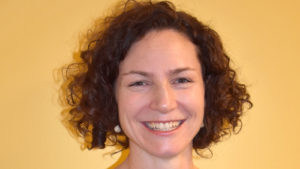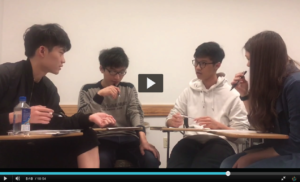 “I am not really a Northeastern student” is a refrain I have heard from several students in my international pathway program. This sentiment of not belonging has fueled my Scholarship of Teaching and Learning work this past year because it contrasts with my conviction that second language education is about gaining access to and participating in new discourse communities.
“I am not really a Northeastern student” is a refrain I have heard from several students in my international pathway program. This sentiment of not belonging has fueled my Scholarship of Teaching and Learning work this past year because it contrasts with my conviction that second language education is about gaining access to and participating in new discourse communities.
I teach English for speakers of other languages in a pathway program for international students with conditional acceptance to the university. While interaction in the target language is essential to language development (Gass, 2017), the feeling of “not really” that students have shared seems to be a barrier to their learning. In addition, I have found that “belongingness” has been linked to international students’ cross-cultural interaction and grades (Glass & Westmont, 2014).
In an effort to understand a slice of students’ experience, I am focusing on the discourse community of my classroom. While the concept of “willingness to communicate” (MacIntyre, 2007) has guided my work, the initial findings that have intrigued me most are the reasons why students decide not to speak in a given moment.
My project is grounded in stimulated recall reflection (Gass & Mackey, 2016), a process for eliciting students’ perspectives on their in-class participation.

When students examine their own participation in class, they develop reflection and interaction skills and strategies that they can apply to other situations as well (Bernales, 2016). Engaging students in self-examination can be useful to me and to my students because it surfaces what is happening for them as they decide if, when, and how to contribute to a discussion.
Because my classes include multiple types of interaction, I investigated four different learning activities, each accompanied by a tool to elicit students’ perspectives on their participation. First, students did a “think/ pair/share” in class, after which they completed an “exit ticket” about how much they talked during the “pair” and “share” and why.
“I assumed that [students’] decisions about participation would be individualistic … However, they were focused on the collective.”
Next, students made audio recordings of a conference with me about an assignment they were working on. They listened to the recordings and answered reflection questions about the conference. Then, students attended a cross-cultural interviewing event with another class and wrote a reflection about their experience. Finally, I videotaped students as they had a discussion in small groups in class. I had the student groups view the video, pausing every 30 seconds and writing in a journal, to recall what they were thinking and feeling at the time.
As I analyzed students’ reflections on their experience in these activities, I realized that I have been looking at “participation” much more narrowly than my students. I assumed that their decisions about participation would be predominantly individualistic (do I talk or do I not talk). However, my students were focused on the collective: listening, turn taking, not wanting to dominate the discussion, trying to find a way to chime in when another person in the group was dominating the discussion, looking for the right moment to say something, and choosing to stay quiet when it seemed like that best moment had passed.
I now appreciate that “participation” for them is a complex process. I realize I had an expert blind spot that interfered with my ability to see all the reasons why participation, as I define it, is hard for them. Based on these preliminary findings I’m making modifications to my course, such as revising the discussion rubric to recognize the many dimensions of work involved in participation.
Gaining insight into my students’ perspectives on their own in-class participation has broadened my understanding of what is going on internally, thoughts and considerations, when they engage in discussion. As a result, I have developed greater empathy for my students.
References:
Bernales, C. (2016). Towards a comprehensive concept of Willingness to Communicate: Learners’ predicted and self-reported participation in the foreign language classroom. System, 56, 1-12.
Gass, S. M. (2017). Input, interaction, and the second language learner (2nd ed.). New York, NY: Routledge.
Gass, S. M., & Mackey, A. (2016). Stimulated recall methodology in applied linguistics and L2 research (2nd ed.). New York, NY: Routledge.
Glass, C. R., & Westmont, C. M. (2014). Comparative effects of belongingness on the academic success and cross-cultural interactions of domestic and international students. International Journal of Intercultural Relations, 38, 106-119.
MacIntyre, P. D. (2007). Willingness to communicate in the second language: Understanding the decision to speak as a volitional process. The Modern Language Journal, 91, 564-576.
